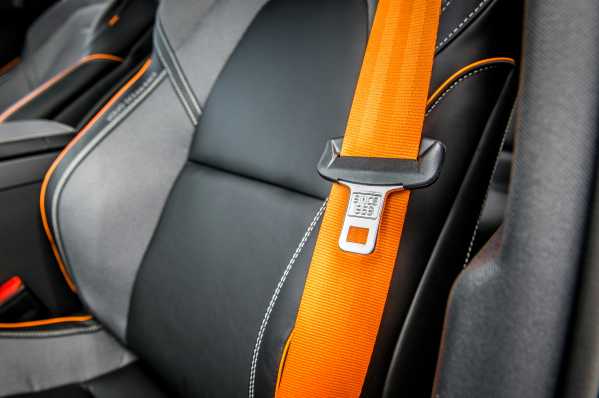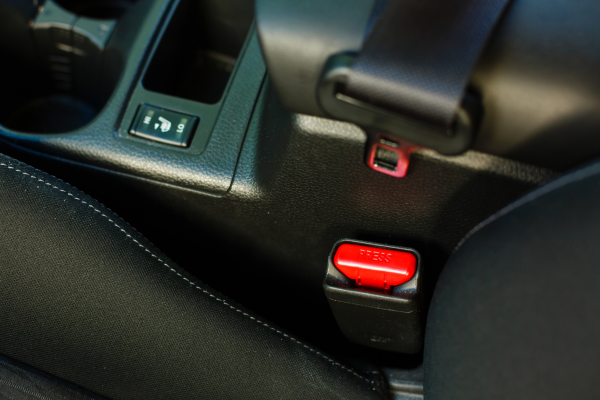Vehicle Safety
How to Stop Dogs from Chewing on Seat Belts: Solutions for Pet Owners

How to Stop Dogs from Chewing on Seat Belts: Solutions for Pet Owners
It's a common scenario for many dog owners: you set off on a car journey, only to find that your furry friend has developed a keen interest in chewing on the seat belts. Not only can this behavior be destructive, but it's also dangerous for both your pet and the occupants of the vehicle. In this article, we will explore effective strategies to help you stop your dog from chewing on seat belts, ensuring both your pet's safety and the longevity of your vehicle's interior.
Understanding Why Dogs Chew
Before delving into the solutions, it's essential to understand why dogs chew. Chewing is a natural behavior for dogs that serves several purposes:
Teething
Puppies chew to alleviate the pain and discomfort associated with teething.
Anxiety
Chewing can be a coping mechanism for dogs experiencing stress or anxiety.
Boredom
Dogs may chew out of boredom if they lack sufficient mental and physical stimulation.
Exploration
Dogs explore the world through their mouths, and chewing helps them learn about their environment.
Now that we have a clearer understanding of why dogs chew, let's explore the solutions.
Effective Solutions to Stop Your Dog from Chewing on Seat Belts
Provide Appropriate Chew Toys
One of the most straightforward solutions is to offer your dog suitable chew toys. Choose toys designed to withstand heavy chewing and consider rotating them regularly to maintain your dog's interest. By providing an appropriate outlet for your dog's chewing instincts, you'll reduce their interest in the seat belts.
Use a Dog Seat Belt Harness
A dog seat belt harness can keep your dog secure and limit their movement within the car. This prevents them from reaching and chewing on the seat belts. When selecting a harness, ensure it fits your dog comfortably and is designed for car travel safety.
Apply a Bitter Apple or Chewing Deterrent Spray
Bitter apple or other chewing deterrent sprays can be applied directly to the seat belts. These sprays have an unpleasant taste that discourages chewing. Be sure to choose a pet-safe product and reapply it as needed to maintain its effectiveness.
Increase Exercise and Mental Stimulation
Dogs with excess energy or boredom are more likely to engage in destructive behaviors such as chewing. Increasing your dog's daily exercise and providing mental stimulation through interactive toys or puzzle feeders can significantly reduce chewing tendencies.
Use Seat Belt Covers
Seat belt covers made from durable, chew-resistant material can serve as a protective barrier. These covers can be easily removed and replaced if damaged, offering an added layer of protection for your car's seat belts.
Behavioral Training
Training your dog is an essential part of curbing unwanted behavior. Teach your dog basic commands such as leave it or no and reward them with treats or praise when they comply. Consistent training and positive reinforcement can effectively deter your dog from chewing on seat belts.
Consult a Professional
If your dog's chewing issues persist despite trying these solutions, it may be beneficial to consult a professional dog trainer or behaviorist. They can provide personalized guidance and develop a tailored plan to address your dog's specific needs.
Chewing on seat belts is a problematic behavior that poses safety risks and can lead to costly repairs. By understanding the reasons behind your dog's chewing, providing appropriate alternatives, employing preventive measures, and applying consistent training, you can protect both your pet and your vehicle. Remember, patience and persistence are key to successfully curbing any unwanted behavior.
Vehicle Maintenance
Repairing Your Car's Seat Belt: A Step-by-Step Guide
Vehicle Safety
Demystifying Airbag Modules: Your Questions Answered
Vehicle Safety
Fixing a Stuck Seat Belt: Your DIY Guide
How to Stop Dogs from Chewing on Seat Belts: Solutions for Pet Owners
It's a common scenario for many dog owners: you set off on a car journey, only to find that your furry friend has developed a keen interest in chewing on the seat belts. Not only can this behavior be destructive, but it's also dangerous for both your pet and the occupants of the vehicle. In this article, we will explore effective strategies to help you stop your dog from chewing on seat belts, ensuring both your pet's safety and the longevity of your vehicle's interior.
Understanding Why Dogs Chew
Before delving into the solutions, it's essential to understand why dogs chew. Chewing is a natural behavior for dogs that serves several purposes:
Teething
Puppies chew to alleviate the pain and discomfort associated with teething.
Anxiety
Chewing can be a coping mechanism for dogs experiencing stress or anxiety.
Boredom
Dogs may chew out of boredom if they lack sufficient mental and physical stimulation.
Exploration
Dogs explore the world through their mouths, and chewing helps them learn about their environment.
Now that we have a clearer understanding of why dogs chew, let's explore the solutions.
Effective Solutions to Stop Your Dog from Chewing on Seat Belts
Provide Appropriate Chew Toys
One of the most straightforward solutions is to offer your dog suitable chew toys. Choose toys designed to withstand heavy chewing and consider rotating them regularly to maintain your dog's interest. By providing an appropriate outlet for your dog's chewing instincts, you'll reduce their interest in the seat belts.
Use a Dog Seat Belt Harness
A dog seat belt harness can keep your dog secure and limit their movement within the car. This prevents them from reaching and chewing on the seat belts. When selecting a harness, ensure it fits your dog comfortably and is designed for car travel safety.
Apply a Bitter Apple or Chewing Deterrent Spray
Bitter apple or other chewing deterrent sprays can be applied directly to the seat belts. These sprays have an unpleasant taste that discourages chewing. Be sure to choose a pet-safe product and reapply it as needed to maintain its effectiveness.
Increase Exercise and Mental Stimulation
Dogs with excess energy or boredom are more likely to engage in destructive behaviors such as chewing. Increasing your dog's daily exercise and providing mental stimulation through interactive toys or puzzle feeders can significantly reduce chewing tendencies.
Use Seat Belt Covers
Seat belt covers made from durable, chew-resistant material can serve as a protective barrier. These covers can be easily removed and replaced if damaged, offering an added layer of protection for your car's seat belts.
Behavioral Training
Training your dog is an essential part of curbing unwanted behavior. Teach your dog basic commands such as leave it or no and reward them with treats or praise when they comply. Consistent training and positive reinforcement can effectively deter your dog from chewing on seat belts.
Consult a Professional
If your dog's chewing issues persist despite trying these solutions, it may be beneficial to consult a professional dog trainer or behaviorist. They can provide personalized guidance and develop a tailored plan to address your dog's specific needs.
Chewing on seat belts is a problematic behavior that poses safety risks and can lead to costly repairs. By understanding the reasons behind your dog's chewing, providing appropriate alternatives, employing preventive measures, and applying consistent training, you can protect both your pet and your vehicle. Remember, patience and persistence are key to successfully curbing any unwanted behavior.
Vehicle Maintenance
Repairing Your Car's Seat Belt: A Step-by-Step Guide
Vehicle Safety
Demystifying Airbag Modules: Your Questions Answered
Vehicle Safety
Fixing a Stuck Seat Belt: Your DIY Guide


